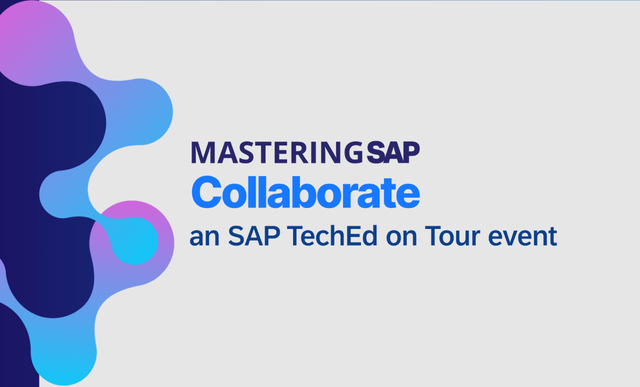SAP Simulation
Filter By
Browse By
- SAP Analytics and AI
- SAP Application Development and Integration
- All SAP Application Development and Integration
- SAP ABAP
- SAP ABAP Development Tools
- SAP ABAP Test Cockpit
- SAP API Management
- SAP BAPI
- SAP Basis
- SAP BRF
- SAP Business Application Studio
- SAP CMS
- SAP Design Studio
- SAP Development Tools
- SAP DevOps
- SAP EAI
- SAP EDI
- SAP Extension Suite
- SAP Fiori
- SAP Fiori Elements
- SAP Integration Suite
- SAP Low Code Application Development
- SAP Low Code Automation
- SAP Netweaver
- SAP Release Management
- SAP UI5
- SAP Web Application Server
- SAP Web IDE
- SAP Business Process Management
- SAP Center of Excellence
- SAP CIO
- SAP Customer Experience
- SAP Data and Data Management
- All SAP Data and Data Management
- SAP BW
- SAP BW/4HANA
- SAP Crystal Reports
- SAP Data Archiving
- SAP Data Center
- SAP Data Governance
- SAP Data Integration
- SAP Data Migration
- SAP Data Quality
- SAP Data Services
- SAP Data Strategy
- SAP Data Visualization
- SAP Data Warehouse Cloud
- SAP DMS
- SAP Document Control
- SAP EIM
- SAP ETL
- SAP ETL Tools
- SAP HANA
- SAP HANA Administration
- SAP HANA Deployment Infrastructure
- SAP HANA Studio
- SAP Master Data
- SAP Master Data Governance
- SAP MDM
- SAP Enterprise Architect
- SAP Enterprise Asset Management
- SAP ERP
- SAP Finance
- All SAP Finance
- SAP Accounting
- SAP AR AP
- SAP Asset Accounting
- SAP Billing Systems
- SAP BPC
- SAP BRIM
- SAP Cash Management
- SAP Central Finance
- SAP Controlling
- SAP COPA
- SAP Cost Center Accounting
- SAP Currency Risk
- SAP e-invoicing
- SAP FICO
- SAP Finance Automation
- SAP Advanced Financial Closing
- SAP Financial Consolidation
- SAP Financial Planning
- SAP FX Risk
- SAP General Ledger
- SAP Global Tax Management
- SAP Hyperion
- SAP Order to Cash
- SAP Payment Processing
- SAP Profitability Analysis
- SAP Rebate Management
- SAP S/4HANA Finance
- SAP SWIFT Compliance
- SAP Treasury Management
- SAP Universal Journal
- SAP Governance Risk and Compliance
- SAP Human Capital Management
- SAP Intelligent Technologies
- SAP Platform and Technology
- All SAP Platform and Technology
- SAP Business Technology Platform
- SAP Cloud
- SAP Cloud Connector
- SAP Cloud Integration Platform
- SAP Cloud Migration
- SAP Cloud Platform
- SAP Cloud Providers
- SAP Cloud Strategy
- SAP Digital Signature
- SAP Container Platform
- SAP HANA Enterprise Cloud
- SAP Digital Asset Management
- SAP Smart Forms
- SAP HEC
- SAP Digital Integration Hub
- SAP Hyperscalers
- SAP Infrastructure
- SAP Messaging
- SAP Quality and Testing
- SAP Security
- SAP Spend Management
- SAP Supply Chain Management
- All SAP Supply Chain Management
- SAP APO
- SAP Asset Management
- SAP Business Network
- SAP Digital Manufacturing Cloud
- SAP Digital Twin
- SAP EWM
- SAP IBP
- SAP Inventory Management
- SAP Label Printing
- SAP Logistics
- SAP Manufacturing
- SAP Manufacturing Automation
- SAP MES
- SAP MII
- SAP MM
- SAP MRO
- SAP MRP
- SAP Order Management
- SAP Plant Maintenance
- SAP PLM
- SAP Production Planning
- SAP S&OP
- SAP SD
- SAP SPM
- SAP Supply Chain Planning
- SAP Track and Trace
- SAP Transportation Management
- SAP System Administration
What is Simulation?
Simulation modeling is the capability to leverage analytics and digital tools to help answer “what-if” questions in the business context. These tools help you evaluate the impact of business decisions on your business processes and may help you select the most optimal decision. An example may be manufacturing scheduling. A simulation modeling tool can help you evaluate the impact of various scheduling approaches on manufacturing cycle time.
What is Simulation?
Simulation modeling is the capability to leverage analytics and digital tools to help answer “what-if” questions in the business context. These tools help you evaluate the impact of business decisions on your business processes and may help you select the most optimal decision. An example may be manufacturing scheduling. A simulation modeling tool can help you evaluate the impact of various scheduling approaches on manufacturing cycle time.
Simulation tools often help evaluate recommendations from other analytics approaches like optimization, without implementing those recommendations in the real-world. The three most widely used process simulation modeling types are:
- System dynamics
- Discrete event modeling
- Agent-based modeling
Simulation Technologies Available in the SAP World
Process simulation modeling tools have been leveraged extensively in SAP technology ecosystem. An example is SIMUL8, which is a flow simulation program that can help you visualize your process flows, understand the bottlenecks, and evaluate the impact of change in parameters on the process. As far as non-SAP process simulation modeling solutions are concerned, all leading simulation software tools like AnyLogic and Simio integrate well with SAP environments.
Key Considerations for SAPinsiders
Understand the methods and process alignment. The choice of method that should be used is based on the system being modeled and the purpose of the model. It is therefore critical to understand which specific simulation method will be a good fit. This is important from the perspective of tools being leveraged since some tools have more coverage and use cases in certain methods.
Define the level of abstraction of the process model. This is where you define how detailed your model needs to be. Remember that this depends on the modeling objective. As an example, if you are trying to gain an understanding of the cycle time of a product flow across the supply chain, you do not need to model individual processes within a manufacturing location. But if your simulation model is going to focus on the impact of changeover time on a manufacturing line, you may have to model the entire line flow in detail.
Think about integration with tools like business process intelligence (BPI). Note that the majority of BPI tools already do a good job of capturing process flow and building a model from that flow. Not all of them, however, offer simulation capabilities and those that do may not have the features a standalone pure simulation tool or module may offer. By strategically integrating a simulation tool with a BPI tool, you can create a solution that takes your process management capabilities even further.
420 results
-

Examining the Features of Business Role Versioning in SAP Access Control 10.1
Reading time: 11 mins
Business role versioning is a functionality introduced in SAP Access Control 10.1 that enables you to have an active and a draft version of a business role. After implementing business role versioning, users can edit business roles by adding or removing new roles without affecting the active version of the business role. Membership Required You…
-

- SAP AI
 Premium
Premium
Combining AIoT and Simulation Modeling
Reading time: 3 mins
AIoT on smart cameras has the potential to create innovative solutions in many domains. These cameras' capabilities can be paired with other emerging or existing tools and technologies to help create innovative solutions. Therefore, IoT-based analytics will be one of the focus topics in our February 2023 research report, Supply Chain Data And Analytics State…
-

SAP and the Industrial Internet of Things (IIoT)
Reading time: 8 mins
“I learn best by doing.” I made this claim to our Chief Research Officer, Riz Ahmed, on my first day as the new Vice President of Research at SAPinsider last week. Ten days later, I find myself writing my first blog post after already having written a full benchmark report. Keep an eye out for…
-
-

- SAP Finance
 Premium
Premium
Troubleshooting Payroll Problems
Reading time: 28 mins
Payroll implementations often face challenges with operational and other run-time issues. Payroll users chase paycheck deadlines on a weekly basis while trying to avoid errors. Learn how to analyze and solve these issues while developing a maintenance strategy. Key Concept When payroll cycles are managed within SAP ERP HCM, preventive maintenance or pre-payroll controls are...…
-

Digital Twins are on the Rise to Mitigate Risk
Reading time: 5 mins
Digital twin technology is on the rise as operational risks increase and companies search for greater efficiencies. Enterprises are discovering more uses for the data digital twins can generate from a variety of business scenarios. Companies are struggling to make their supply chains resilient. With recent port congestion, freight delays, labor shortages, material shortages, and…
-

 Premium
Premium
How to Execute Heuristics in Supply Network Planning
Reading time: 23 mins
Learn the process flow of an SAP Advanced Planning and Optimization (APO) supply network planning (SNP) heuristics run. Follow a step-by-step procedure to configure and run three types of heuristics and interpret the results. Key Concept An heuristics run can be broadly classified into three categories: location, network, and multi-level heuristics. The main characteristics of...…
-

 Premium
Premium
How Tyson Foods Streamlined Its SAP Financials Training
Reading time: 10 mins
ManagementCompanies that invest in SAP ERP systems expect to realize every advantage offered by such a robust suite of technology. However, buying, customizing, and implementing the technology itself is not enough. Companies must find ways of teaching users how to get the most out of the system. That is a lesson Tyson Foods learned well...…
-
-

 Premium
Premium
What You Need to Know About BW-BPS
Reading time: 7 mins
Learn about SAP’s Business Planning and Simulation (BPS) and why it now is a part of SAP Business Intelligence (SAP BI). In addition, find out what has changed in BW-BPS from SEM-BPS and get an overview of your upgrade options. Key Concept SAP’s Strategic Enterprise Management (SAP SEM) is a module that provides strategic planning...…
-

 Premium
Premium
Understand and Streamline Your R/3 HR Payroll-FI Integration: How to Debug Common FI/CO Problems Caused by Payroll
Reading time: 15 mins
Learn about common FI/CO problems caused by Payroll and how to debug the process. Key Concept The central integration object between SAP Payroll and FI/CO is the symbolic account, a four-character code that connects wage types in Payroll to accounts in FI/CO. Understanding the integration between SAP Payroll and FI/CO is critical to ensuring that...…
-

 Premium
Premium
How to Get the Most Out of SAP Collections Management
Reading time: 14 mins
Learn a few tips on how to capitalize on the functionalities that SAP Collections Management offers. Key Concept SAP Collections Management is a process within SAP ERP to efficiently manage the customer collection process. It is based around the principle of a prioritized worklist for the collections specialist to use to contact customers. The specialist...…
Become a Member
Unlimited access to thousands of resources for SAP-specific expertise that can only be found here.
Become a Partner
Access exclusive SAP insights, expert marketing strategies, and high-value services including research reports, webinars, and buyers' guides, all designed to boost your campaign ROI by up to 50% within the SAP ecosystem.
Upcoming Events
-

Mastering SAP Collaborate, an SAP TechEd on Tour event
November 12 - 14, 2025
Sydney, New South Wales
Australia
View Event
Related Vendors
Your request has been successfully sent

